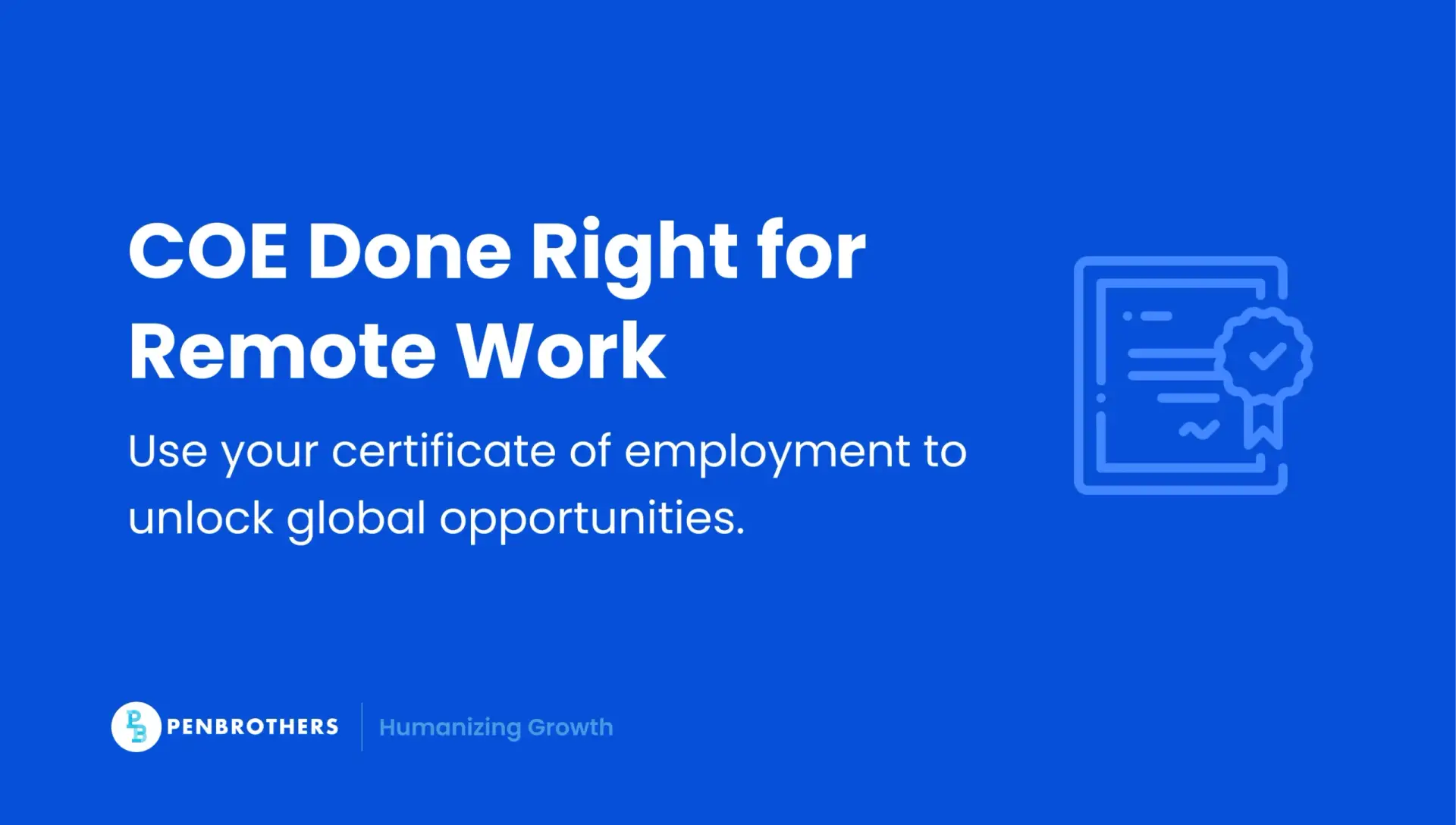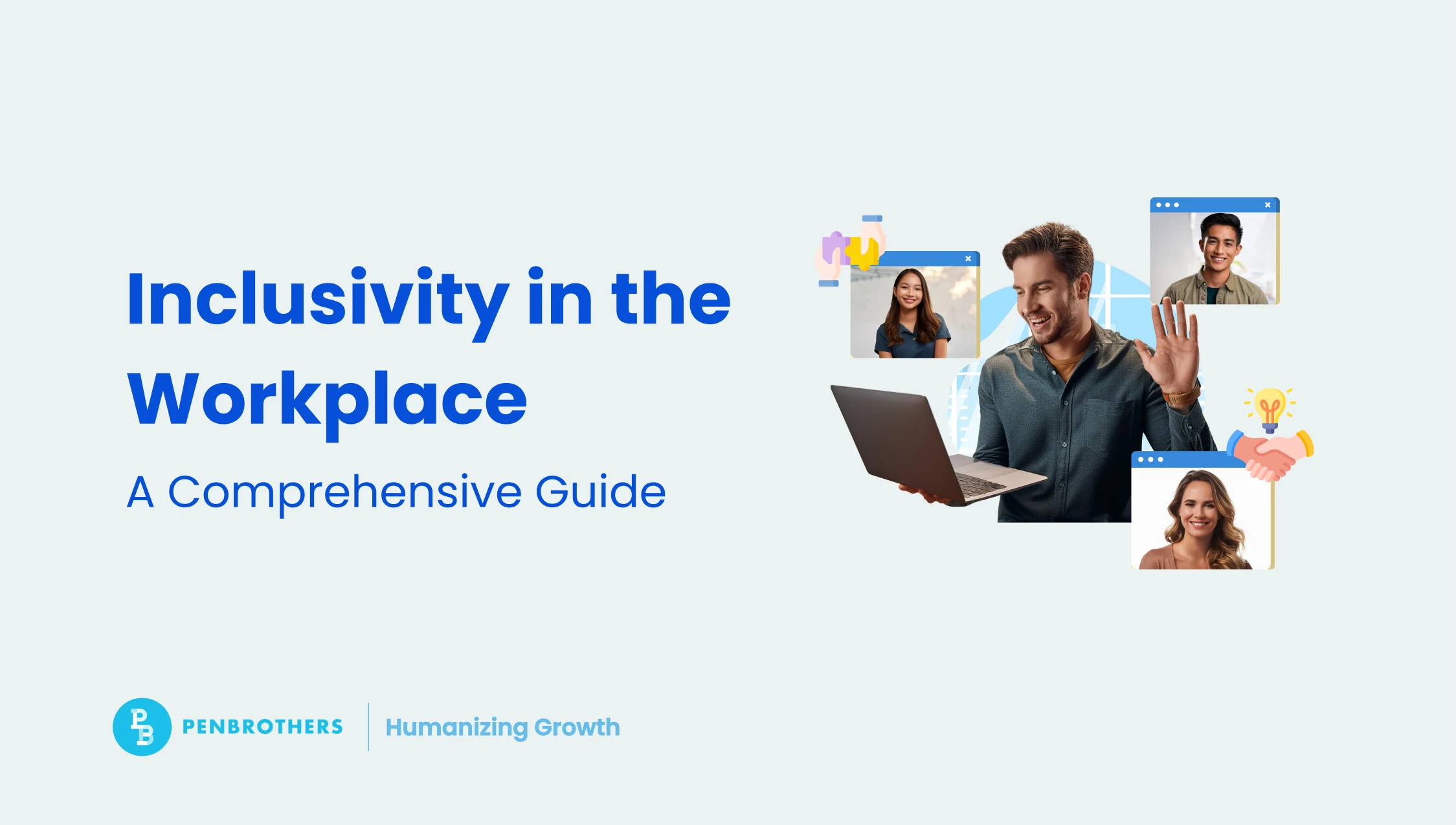What's Inside?
Certificate of Employment: Remote Employees’ Guide

Key Takeaways
- COEs remain a legal right under Philippine labor law, issuable within 3 days of request.
- Remote COEs must include digital authenticity markers like legal employer, work modality, and HR contact.
- Freelancers and contractors can use Certificates of Service or Attestation Letters instead.
- Employers must treat the issuance of a certificate of employment as both a compliance and a reputation responsibility.
- Employees should secure COEs regularly to maintain a verified, updated record of their professional history.
When remote work became the norm, many employees assumed that traditional HR documents like the COE would lose relevance. After all, with online contracts and digital payrolls, do you really need a printed piece of paper?
The truth is: yes, you do.
An employment certificate remains a critical document of trust and compliance. It’s often the first proof that banks, embassies, or future employers will ask for to verify that your work history and income are legitimate. And if you’re working remotely under an Employer of Record (EOR) or a cross-border setup, this document plays a crucial role in validating your employment with the legal entity that pays you.
For HR teams, issuing employment certificates accurately and promptly isn’t just an administrative task. It’s a legal responsibility under Philippine labor law. For employees, knowing how to request one properly can prevent delays in job applications, visa processing, or financial transactions.
This guide explains everything you need to know. From what to include in a COE to how to request or issue it remotely.
What Is a Certificate of Employment (COE)?
A Certificate of Employment (COE) is an official document issued by an employer confirming an employee’s tenure and position in the company.
According to the Philippine Labor Code and DOLE Labor Advisory No. 06-20, all employees, regardless of employment status, have the right to request and receive a COE from their employer within three (3) calendar days upon request.
At a minimum, a COE should confirm:
- The employee’s full name
- Position or designation
- Start and end date of employment (or indicate “currently employed”)
- The legal name of the employer or employing entity
Who Is Entitled to a COE?
- Employees: Whether regular, probationary, or project-based, you are legally entitled to a COE upon request.
- Contractors or Freelancers: They aren’t considered employees under labor law, so they should request a Certificate of Service or Client Attestation instead.
In a remote setup, the COE still performs the same function, but with added layers of digital verification. It becomes both a legal document and a digital identity marker that proves your remote employment relationship is legitimate.
Required Details for a Legally Valid and Remote-Ready COE
Traditional COEs only needed a signature and letterhead. In remote environments, authenticity and digital verification are just as important as the information itself.
Here’s what a remote-ready COE should include:
1. Legal Employer Identity
If you work for a client through an Employer of Record (EOR), your COE must reflect the legal employer, not just the client brand. For example, if you work with a U.S. startup through a Philippine-based EOR, the COE should name the EOR as your official employer.
2. Work Modality
Specify whether the role is remote, hybrid, or on-site, including your country or city of operation. This clarifies that you’re working legally under Philippine jurisdiction, even for international companies.
3. Employment Type
Indicate whether the role is full-time, part-time, or project-based. This helps verify your eligibility for benefits or financial applications.
4. Digital Credentials
Remote COEs should use:
- A digital signature from the HR or authorized representative
- The company’s official letterhead
- A visible timestamp or document version
- A PDF format to prevent editing or tampering
5. HR Contact for Verification
Always include an official company email domain (e.g., [email protected]) and not a personal address. This ensures third parties can verify authenticity.
6. Salary Information (Optional)
Include compensation details only if explicitly requested. For instance, in visa or loan applications. Salary disclosure isn’t mandatory under DOLE.
A remote-appropriate sample phrasing might read:
“This is to certify that [Employee Name] was employed as [Job Title] under [Legal Employer Name] from [Start Date] to [End Date], working remotely from [Location].”
How to Request a Certificate of Employment as a Remote Employee
Without a physical HR office to visit, remote workers must rely on clear communication and proper documentation. Here’s how to ensure a smooth COE request:
Step 1: Review Company Policy
Check your HR handbook or internal portal. Many remote companies now offer digital request forms through HRIS or ticketing systems.
Step 2: Draft a Formal Email
If no portal exists, send a request via your official company email.
Include:
- Full name and employee ID (if any)
- Purpose (e.g., visa application, new employment, bank loan)
- Type of document requested (COE with or without compensation)
- Date needed and preferred format (digital or physical copy)
Step 3: Request Digital Signature
Ask for a signed, PDF-version COE. Digital signatures are legally valid under the Electronic Commerce Act of 2000 (RA 8792).
Step 4: Authorize a Representative (if needed)
If you require a physical copy, you may authorize someone to pick it up with:
- A signed authorization letter
- Copies of your and your representative’s IDs
Step 5: Follow Up Professionally
If you haven’t received your COE within three (3) days, send a polite follow-up citing DOLE Labor Advisory No. 06-20. Empathic follow-ups often work faster than legal citations alone. HR teams manage multiple requests daily, especially in remote setups.
For Employers: How to Issue a COE That Meets Compliance and Verification Standards
Employers, whether local or global, must take COE issuance seriously. It’s a compliance obligation and a trust signal for both employees and partner institutions.
Key Employer Practices:
- Issue Within 3 Days: Failure to do so can be considered non-compliance with DOLE advisories.
- Verify All Details: Ensure employee tenure, title, and legal entity match payroll and HRIS records.
- Digitize COEs: Use verified e-signatures and company letterheads. Store records securely in your HR system.
- Clarify Employer Identity in EOR Setups: If your company partners with an EOR, the EOR must issue the COE, not the client.
- Maintain Request Logs: Keep audit trails for all COE requests for legal and documentation consistency.
A well-managed COE process demonstrates employer professionalism and strengthens HR compliance credibility, especially when working with distributed teams.
Alternatives for Freelancers, Contractors, and EOR Hires
If you’re not classified as an employee under Philippine labor law, your client or platform may not issue a COE. In that case, here are valid substitutes:
- Certificate of Service (COS): Confirms project scope, duration, and work completed for a client.
- Client Attestation: A letter acknowledging that you worked for a client or partner for a defined period.
- Verification via Platform or EOR: For remote hires under an EOR, request your COE directly from the EOR since they’re your legal employer.
These alternatives can still satisfy documentation requirements for visa applications, background checks, or bank verifications, as long as they’re properly signed and include contact details.
Common Issues and How to Resolve Them
Even the most organized remote setups face COE-related challenges. Here’s how to handle them effectively:
1. Delayed Issuance
- Politely follow up with HR after three days.
- Reference DOLE Labor Advisory No. 06-20.
- If ignored, file a request via DOLE’s Single-Entry Approach (SEnA) for mediation.
2. Incorrect Details
If your COE contains errors (e.g., wrong title or employment dates), request corrections in writing and attach proof (payslips, contracts, etc.).
3. Unresponsive HR Teams
Document your communication trail. Screenshots and emails serve as proof of your efforts to comply before seeking DOLE assistance.
4. Employer Refusal
Refusing to issue a COE is a violation of employee rights. DOLE can compel compliance upon verified complaint.
5. Cross-Border Verification
For global employers, encourage the inclusion of an HR verification email or digital verification code embedded in the COE.
Why Remote Employees Should Regularly Secure a COE
Most employees request a COE only when they resign or apply for a visa. But remote workers should make it a habit to request updated COEs annually or after major milestones.
Here’s why:
- Proof of Progress: Helps you document promotions, title changes, or project completions.
- Faster Future Transactions: Banks or embassies often ask for recent documents (issued within 6–12 months).
- Career Continuity: For freelancers and EOR hires, COEs or Certificates of Service become a verifiable record of your digital career.
- Data Protection: Having your own COE records ensures continuity if the employer or HR system changes.
Proactivity in documentation pays off, especially when your professional proof lives in the cloud.
*This article was crafted with the support of AI technology and refined by a human editor.





